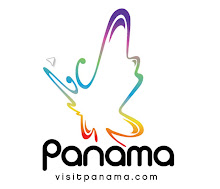Spain moved its riches in ships to the port of Portobelo in the area of Colon. From there, donkeys and canoes conveyed the goods across the isthmus to Panama City for distribution to all of its colonies in America.
The constant transports of great wealth quickly became noticed by English pirates and mercenaries like Francis Drake, who hit Portobelo in 1596, and Henry Morgan, who set fire to the first City of Panama in 1671. The city was then moved to the Casco Antiguo in what is currently the nation's capital. This turned the new city into the focal point for the growth of the young republic.
Moved by the independence of its bordering nations, Panama declared its own independence from Spain in November of 1821. The choice came as no shock in view of the fact that contact with Spain had fallen apart long earlier. Nevertheless, the independence process was so smooth that it was celebrated by Simon Bolivar, South America's freedom fighter.
Following its separation from Spain, Panama, voluntarily united with the Great Colombia, Bolivar´s dream. Colombia, Venezuela, Ecuador and Panama made up his newfound country.
Initially, this notable union significantly helped Panama. It gave way to a different image of Latin American leaders that promoted unlimited regional development. This era in history also marked a milestone globally as the United States received the go-ahead to build the first intercontinental railroad.
However, the Panamanians' desire to become a liberated and self-governing nation, aided by the United States, carried Panama to complete the separation from Colombia by November 3, 1903.
The American development and finishing of the Panama Canal started in 1904. It was considered the eighth wonder of the world. The French were the earliest to undertake in this massive endeavor, but the climate, tropical illnesses plus poor management kept them from completing the charge. The Americans observed the failed endeavor and were determined to pick things up again. Upon its completion, Panama was forever altered. The country was once again a global channel and a cradle of affluence and an advancing financial culture.
In the present day, Panama is one of the most developed countries in Central America. It has one of the most established economies and the most rapid tourism growth in the Americas. It enjoys a fresh, new and healthy democracy. It is regarded as a safe, nonviolent and affluent nation.
At this time, Panama oversees the canal, which is experiencing an expansion. This is a nation constantly advancing, highlighting an international banking base, profitable law firms, insurance agencies, call centers, upscale malls, as well as wonderful cultural diversity, desirable ecological wealth and an active tourism industry.

No comments:
Post a Comment